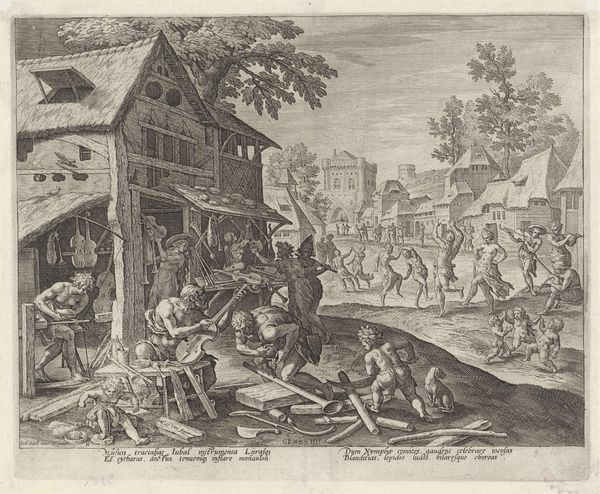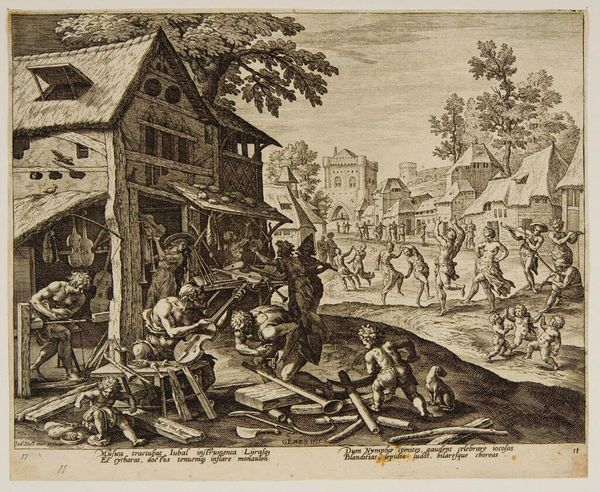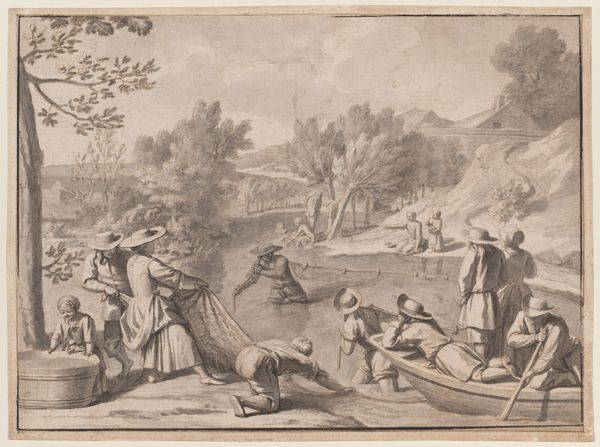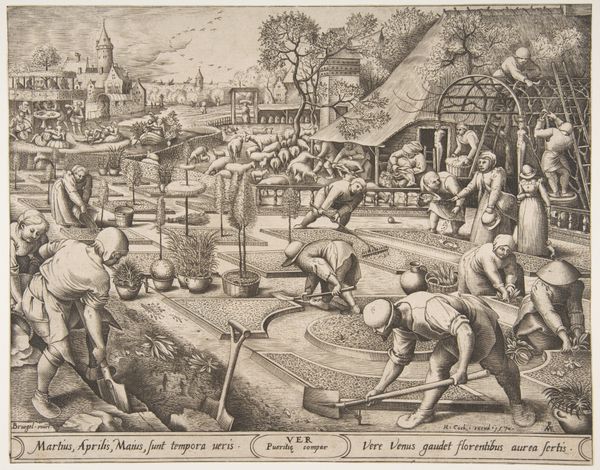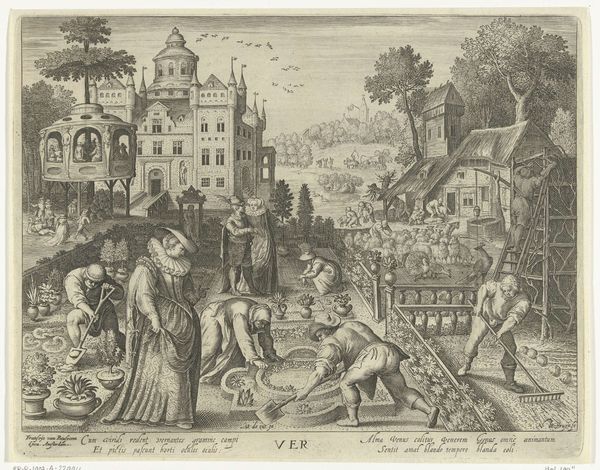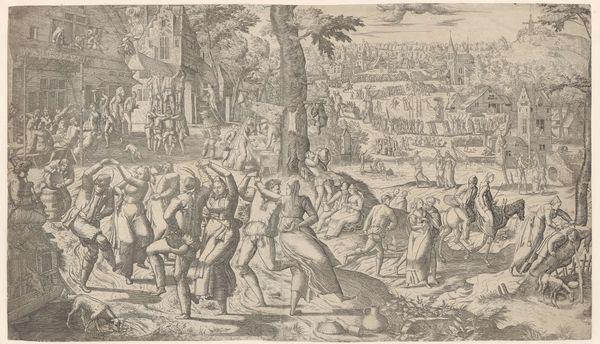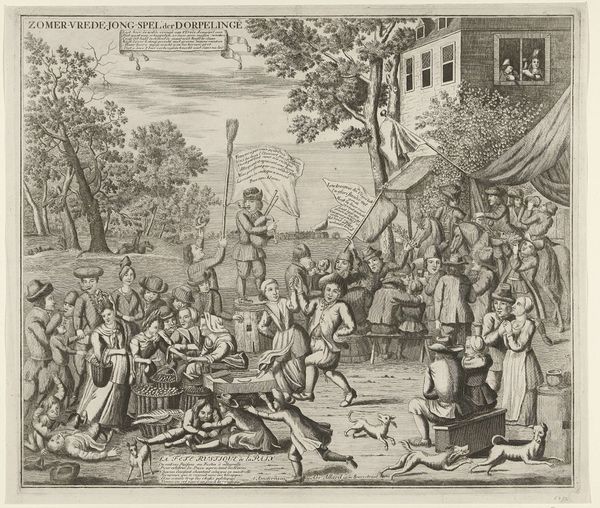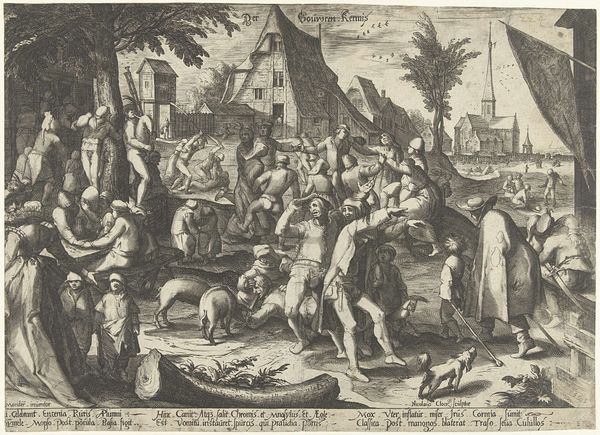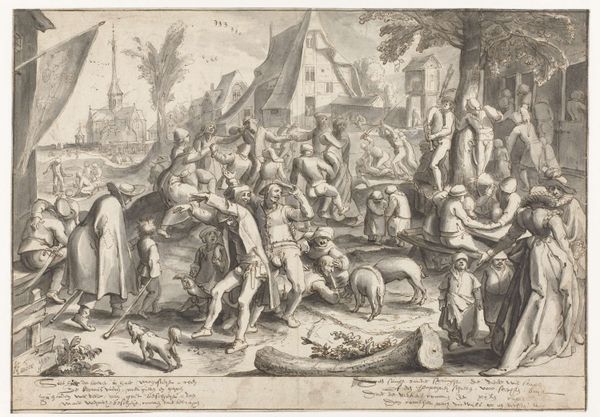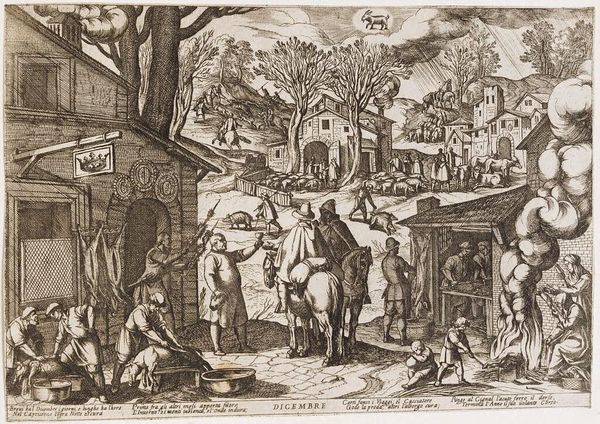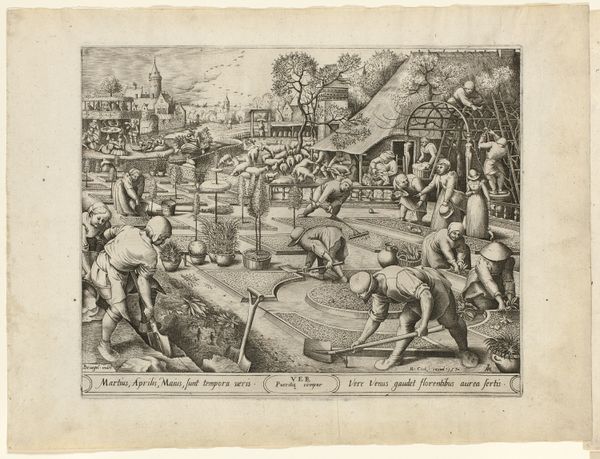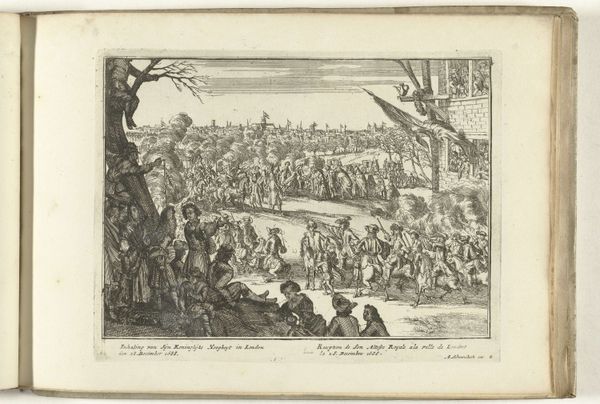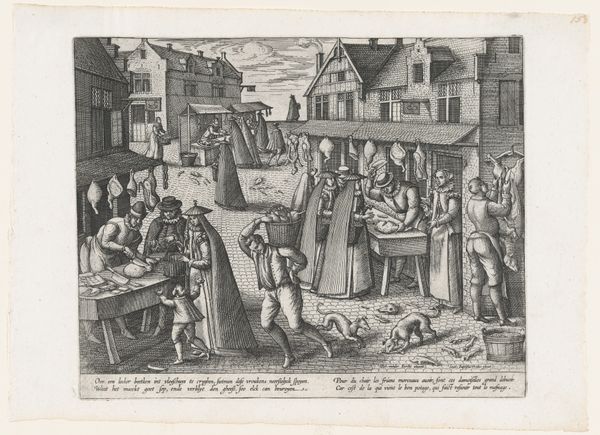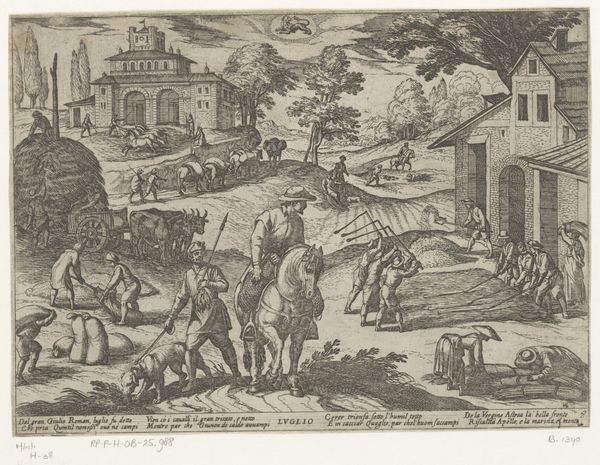
print, engraving
# print
#
landscape
#
figuration
#
oil painting
#
genre-painting
#
history-painting
#
northern-renaissance
#
engraving
Dimensions: height 200 mm, width 244 mm, height 537 mm, width 378 mm
Copyright: Rijks Museum: Open Domain
Curator: Immediately, there's a real sense of organized chaos here. So much activity crammed into one space. Editor: Indeed. This print, "Jubal en zijn gezin maken muziekinstrumenten" or Jubal and his family making musical instruments, dates to 1583. It's the work of Johann Sadeler I and resides here at the Rijksmuseum. It showcases a landscape brimming with people making instruments in the foreground and dancing figures farther away. Curator: The details surrounding instrument-making really captivate me, offering a rare glimpse into early workshops and family life. The family angle is also fascinating. Editor: Definitely. Jubal, a biblical figure, is considered the father of all who play stringed instruments and organs. In that context, this engraving is loaded with symbolic intent, beyond the day-to-day. Music has always possessed transformative power. Notice how those being entertained react—seemingly lifted into a divine madness. Curator: It’s fascinating how art like this both reflected and reinforced societal hierarchies, especially the value of creative professions. Yet, how did this imagery influence artistic culture during the northern Renaissance, specifically regarding genre painting and the portrayal of daily routines? Editor: The musical instruments serve as powerful visual emblems. They denote culture, leisure, sophistication. They're visual triggers that elevate the subject from simple genre painting into something more profound: an emblem of human creativity blessed by God. Think how often musical instruments feature in vanitas paintings as metaphors for fleeting beauty and earthly pleasure. Curator: So, this is more than a family portrait; it's a proclamation of music's societal and spiritual standing. It presents the Renaissance ideal of mastering arts within an environment of burgeoning global exchange. It served, perhaps, as aspirational and inspirational for audiences who saw societal upliftment via music and art. Editor: Absolutely. Seeing this piece in the broader context of European cultural development helps to deepen an understanding of not only music’s past role, but also where music may lead future society and thought.
Comments
No comments
Be the first to comment and join the conversation on the ultimate creative platform.
